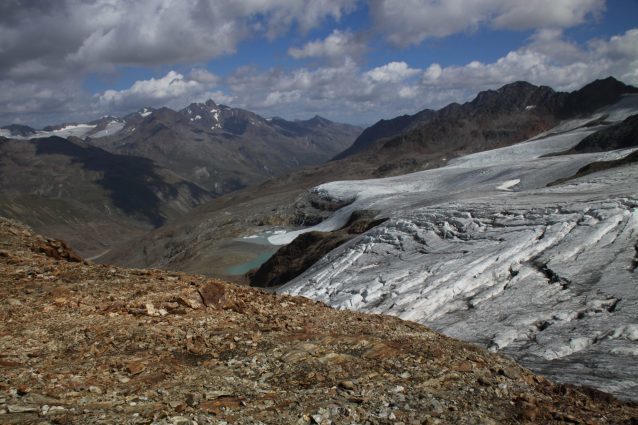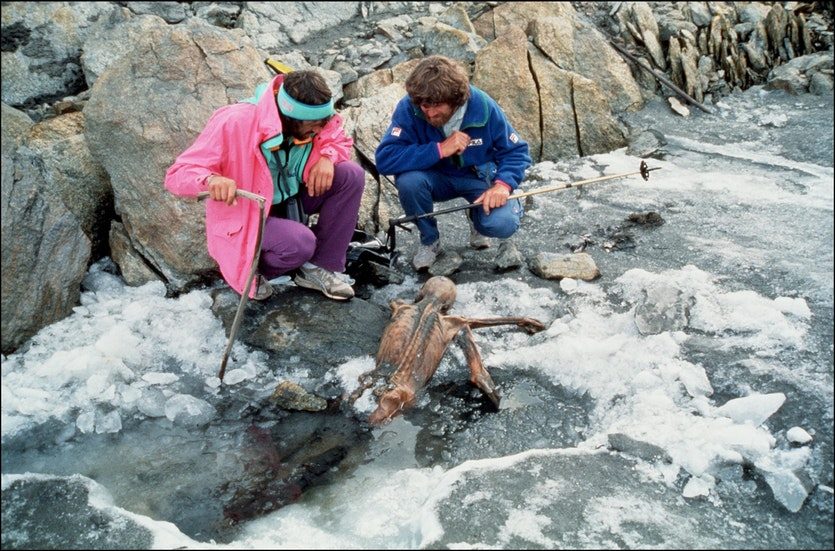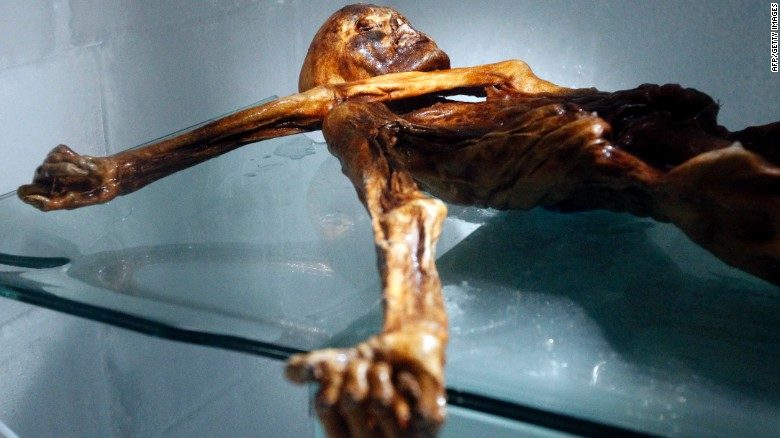When the Iceman (also nicknamed Ötzi after the Ötzal Alps where he was found) was discovered by two hikers in South Tyrol, Italy in 1991, he was laying face down in a frozen gully. He had been killed over five thousand years prior — shot through the back with an arrow — but the glacier's ice preserved his corpse. Also captured in the ice around his shriveled body was a menagerie of neolithic plants and fungi.

Dickson and his colleagues from the University of Innsbruck, in Austria, gathered thousands of fragments of bryophytes picked off of the Iceman's clothes, gear, the grass mats in the gully where he was found, and his gut. The assemblage of liverworts from that period — 10 species altogether — is a particularly big find, because they do not last long exposed to weathering elements. Researchers surmised the plants must've been rapidly frozen by the glacier.
Seventy percent of the species picked from in and around Ötzi's body do not live at the altitude where he was found — about 10,500 feet above sea level. This indicates to researchers that he carried some there himself. Others were likely deposited by animals, water or wind. Mosses and liverworts are unique non-vascular plants that do not reproduce with seeds, but with spores. They can cling unseen on people's clothes or animal's fur in the way that fungal spores or pollen can. As a person or creature tramps through the forest or meadows, tiny fragments of mosses can stick to their outsides as well.
The mosses found in the Iceman's gut were not ingested intentionally. In the same way that spores and fragments adhere to clothes or fur, they could've stuck to his food and gotten to his insides that way. Alpine ibex or chamois (a goat-antelope native to Europe) were likely the animals that unwittingly carried some of the other moss species up Schnalstal. Ötzi himself was a hunter — his bow was recovered by his side — and his last meal was of cured ibex meat.
Other neolithic mummies found preserved in bogs have had some mosses in their guts, but according to Dickson, these were not eaten intentionally either. "Mosses are not nutritious or palatable," he said. "There is no good evidence that mosses have ever been eaten as staples anywhere, by anyone present or past."
Some species of moss have been used by indigenous peoples for medicinal and other practical purposes, however, and the Iceman himself did seem to be carrying one particular species of moss intentionally — Neckera complanata — that he had wrapped his food in.

The Neckera complanata, bogmosses, and two other species collected with Ötzi are particularly revealing about his activities in the last forty-eight or so hours of his life. These mosses are all found at lower elevations in the Schnalstal Valley and indicate that he took a particularly strenuous climb up the glacier through a gorge. This corroborates a previous theory of his movements suggested after pollen from hophornbeam trees was found in large quantities in his bowels. Hophornbeam are plentiful in the lower Schnalstal.
Why he took such a tiresome route up the Schnalstal could be explained by the fact that he was murdered and was possibly on the run from his attacker. The gorge is full of boulders and trees and has many hiding spots. Why he was on the lam we'll never know, but it could've had to do with the cut he received on his hand a few days earlier. Perhaps an altercation broke out that caused him to flee for his life. In spite of his murderous end, however, countless studies of Ötzi and his belongings have furnished invaluable gifts of information about early human history that would otherwise be unknown.





Comment: For more on Ötzi, see: